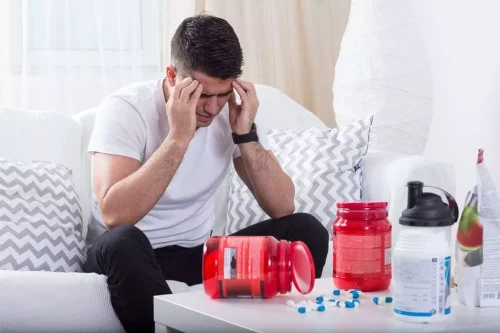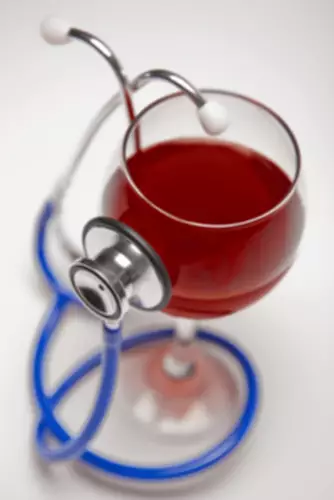Chưa có sản phẩm trong giỏ hàng.

Accumulation of iron in the liver and hepatitis C also increase the risk of liver damage by alcohol. Alcohol-related liver disease is liver damage caused by drinking too much alcohol for a long time. Easy bruising can be a sign of an underlying condition and a higher risk of bleeding overall. Risk factors for easy bruising include older age and taking blood-thinning medications. Von Willebrand disease, the most prevalent bleeding disorder, affects about 1% of the population.

Bleeding disorders
Contact your GP for advice if you have a history of regular alcohol misuse. After your injury, put an ice pack on it every once in a while for the first hours. Wrap the ice pack before you put it on so you don’t freeze your skin, and don’t leave it on for more than 15 minutes at a time. If you have a bruise on your breast and don’t know how you got it or have other symptoms, go talk to your doctor.

What Is Alcoholism?
Seeing a doctor can help determine if there’s a more serious issue and get you the right treatment. Plus, you’re more susceptible to an accidental fall or bump after you’ve been drinking, anyway. Mindful drinking offers that middle ground where you’ll proactively improve your drinking habits without any pressure to do alcoholics bruise easily quit. It centers on being more conscious and thoughtful of how much, how often, and why you drink. As a result, you’ll enjoy better sleep, improved mood and energy, and fewer wellness issues. Alcohol suppresses rapid eye movement, or REM sleep, which is an essential restorative stage of sleep your body requires.
(Alcoholic Liver Disease; Alcohol-Associated Liver Disease)
Without a vitamin K injection at birth, babies may bruise easily or bleed excessively. Adults with low vitamin K levels may also notice a sudden increase in bruising. When you bruise easily, it can sometimes seem just as easy to identify the cause, such as advancing age or a blood thinner medication you’re taking. Keeping yourself hydrated is critical to avoid and stop bruising from alcohol. Alcohol intake may cause dehydration, which can compromise your skin’s health and make it more sensitive to bruising and other possible injuries. Staying hydrated when drinking alcohol might help you avoid unpleasant side effects like bruising.
- Bleeding continues longer after an injury because the blood cannot clotted properly.
- People may have a fever, jaundice, and a tender, painful, enlarged liver.
- You may also notice swollen lymph nodes in your armpit or near your collarbone on the same side as the bruised breast.

While peripheral neuropathy generally cannot be cured, there are several medical treatments that can be used to manage the pain of alcoholic neuropathy, aiding in your recovery. People with a lengthy history of alcohol misuse might experience loss of balance, pain, tingling, weakness, or numbness after drinking alcohol. Learn more about this condition, including its symptoms, how it’s treated, and ways to cope.
what causes painless little blood blisters on the skin?

It’s possible that this can cause you to bruise more easily as a result of platelet function and other changes. With mastocytosis, too many mast cells (a type of white blood cell) grow in the body. The main types include systemic conditions that affect the body, and cutaneous conditions that affect only the skin. People diagnosed with a mast cell disorder also may bruise easily. These immune system disorders, with subtypes that range from the comparatively mild to life-threatening, are genetic and rare. In this condition, the body makes too much of a hormone called cortisol.
Successful bartenders know that engaging their guests is as important as making a great cocktail. To do so, many bartenders turn to flair bartending, where they perform tricks that enhance the experience of their guests. Understanding how to measure accurately and free pour allows for creativity and consistency. From the initial pouring technique to ensuring the right amount of liquid in each drink, these skills enhance the overall experience of crafting cocktails. In conclusion, bruising is an important aspect of bartending that can impact a cocktail’s flavour, colour, and consistency.
- A person with a genetic bleeding disorder has a higher risk of bruising and excessive, possibly life threatening bleeding.
- Bruising after drinking alcohol can be linked to deficiencies in vitamins like vitamin C and K, and minerals like zinc, which are important for skin health and healing.
- It is important to be aware of the possible dangers of combining these two, as such encounters may have detrimental repercussions for your general health and fitness.
- It also includes binge drinking — a pattern of drinking where a male has five or more drinks within two hours or a female has at least four drinks within two hours.
- In this case, you should go see your doctor to find out what’s going on.
- Platelets help the blood clot, so a low level of them can cause easy bruising.
Liver cancer develops in 10 to 15% of people with cirrhosis due to alcohol abuse. Anyone who notices they are bruising more often or more easily than usual should seek medical advice to rule out other health issues or seek treatment as appropriate. You may get a bruise from a bump or injury to the skin or the tissues beneath the skin.

What am I lacking if I bruise easily?
Perhaps the most common cause of bruising from alcohol is that alcohol acts as a vasodilator, making blood vessels larger. Other signs of an alcohol use disorder include spending a significant amount of time drinking, or consuming larger quantities of alcohol than intended. A person may also develop a tolerance for alcohol, meaning that they need larger https://ecosoberhouse.com/ and larger amounts to obtain the desired effects. As alcohol-related liver disease progresses to alcoholic hepatitis, symptoms may range from mild to life-threatening. People may have a fever, jaundice, and a tender, painful, enlarged liver. Generally, the more and the longer people drink, the greater their risk of alcohol-related liver disease.


